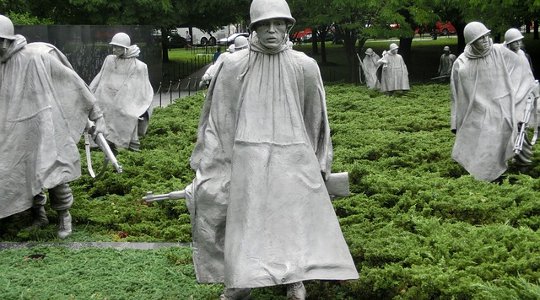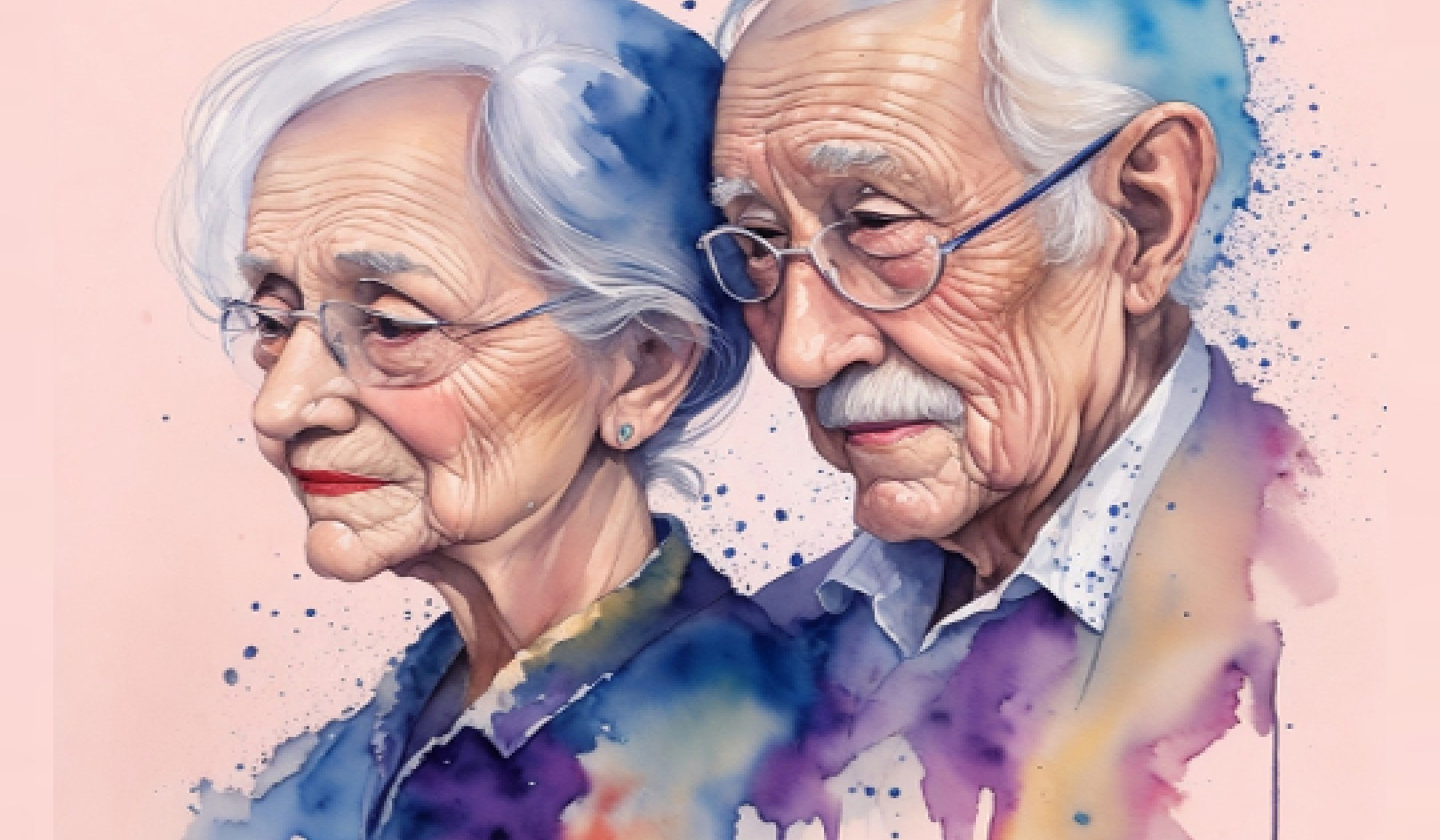 War Memorial/Military Cemetery
War Memorial/Military Cemetery
Modern society spends considerable effort on disinfecting the experience of dying. This inclination to hide and exclude death from everyday social activity is supported by the transfer of the place of death from home to the hospital.
During the second-half of the twentieth century the burden of care, once assumed by neighbors, friends, and family, was passed onto strangers and medical caretakers. The new sites of death which emerged, most notably the hospital and long-term care facility, enabled the removal of unpleasant and horrifying sights of the dying process from ordinary social and cultural experience. This transformation, whereby death was sequestered and institutionally confined, was attractive to a culture that was increasingly fearful of dying.
In the hospital, dying is removed from the moral and social fabric of the culture. It becomes redefined into a technical process that is professionally and bureaucratically controlled. The horribleness and enormous suffering of dying is banished from public visibility as it is isolated within the professional, technical confines of the hospital. It is also important to note that in this way the experience of dying has become both medicalized and sequestered out-of-the-way. It has been argued that the medicalization and isolation of dying are forms of death denial. Indeed, if we examine the way dying and death are organized in the hospital culture, a clear pattern of closed and obscured death awareness emerges.
In Modern Times, Death Is Viewed as Failure
In the modern context in which dying has lost its meaningfulness, death is viewed as failure. This fact helps explain the great sense of shame and humiliation that dying persons and their loved ones feel. In addition, many physicians view death as defeat and failure on both a personal and professional level. As long as dying is seen as shameful and death is viewed as failure, open and honest communication will be stymied. Simply, no one likes to talk about their shortcomings or failures. These, instead, are remanded to the isolated, invisible realm of our collective human experience. That is to say, they are, in fact, denied.
In the current cultural and medical framework, silence surrounds suffering, dying, and death. These keenly felt human experiences are plunged deep beneath the surface of everyday cultural activities, becoming concealed and privatized. Norms and rituals that once helped to sustain and guide persons through the dying process have vanished. It is precisely this devaluation of dying as an important cultural experience that has subsumed the management and control of dying in the technological, medical model. The crucial point to be made is that cultural meaninglessness prompts widespread avoidance and denial, and that the cultural campaign to deny death is waged largely within the strictures of technological medicine.
Yet, despite the widespread cultural inclination to avoid open confrontation, there may be reason to believe that death is not actually denied as much as some have claimed. In the first place, death has been a topic of increasing attention in academia and in popular literature. Scholars who have written, during the past two decades, about the American ways of death denial have contributed to a growing body of professional literature. The presence of this literature, some of it even publicly visible on the shelves of bookstores, mitigates denial. Slowly but surely, thanatology courses on college campuses began to emerge. Textbooks began to proliferate during the 1980s. Movies and plays began to tackle the culturally taboo topics of suffering and dying. Self-help and support groups have burgeoned.
Acceptance and Denial Seem To Coexist
An entire genre of popular, self-help literature on grief has emerged -- some of which, ironically in this age of denial, became best sellers. More recently, newspapers, television, and magazines have catapulted Jack Kevorkian into the mainstream of cultural conversation. National Public Radio has produced an excellent series on end-of-life care. Funeral homes advertise in the Yellow Pages, and more recently have advertised their services on the previously forbidden medium of television. A "dying well," palliative care movement is beginning to take form within the profession of medicine. Death, it seems, is slowly creeping out of the closet and assuming a somewhat visible status in an otherwise death-denying environment.
Thus, it would appear that the American relationship to death and dying is changing. Avoidance and denial seem to coexist with a newly fashioned thrust toward openness. The evolution of this relationship between "avoidance" and "acceptance" requires further contemplation. The key point to consider is whether or not the thanatology movement, with its focus on dignity and openly acknowledging death as a vital part of the human experience, represents a transformation of attitudes or is a recasting of the American framework of denial into a new form.
In primitive societies, ritual and ceremony were heavily relied upon to shield individuals and their community from evil and death. These rituals were connected to the ways of life and provided for cosmic meaning to suffering and the end of life. These rituals eased the terror of death, and enabled individuals to confront dying with courage and reassurance throughout the ages. Thus, the seeming absence of fear was in fact a reduction and control of fear by cultural intervention.
Vulnerability and Insecurity Are Inherent In The Human Condition
Traditional rituals and meanings generated an atmosphere of openness that eased the terror of death and offered solace to dying individuals. According to Becker, however, the terror of death would not remain submerged indefinitely. It would return with a fury if traditional rituals and meaning dissipated, as he argues is the case in the contemporary world. E. Becker (author, Escape From Evil and The Structure of Evil) argues that modern rituals have become hollow and unsatisfying. As a result, modern individuals are deprived of stable, meaningful life rituals, and have become increasingly "confused," "impotent," and "empty" during both their lives and deaths.
In light of Becker's criticism of the organization of modern life, it is important to pose the following question: What is it that makes humanity empty, confused, and impotent in the contemporary setting? His answer and mine are quite similar. It is because the meanings of life and death in the materialistic, technologically driven society have become shallow, thereby precipitating enormous insecurities and anxieties. One does not have to look too far to see how complaints of personal unease and worry permeate the culture. And, this widespread base of anxiety in living becomes exacerbated into a deep dread and anguish when individuals are forced to confront the end of life.
According to Becker, greed, power, and wealth have become the modern response to vulnerability and insecurity inherent in the human condition. They provide for a base of honor in our materialistic society, and generate an illusion of omnipotence and immorality. Becker takes this argument to its logical extreme, and asserts that the dread of death and emptiness of life in the twentieth century have been responsible for cultivating unprecedented evil through the pursuit of greed, power, and the associated development of destructive capabilities.
Thus, for Becker, the stupidity and inhumanity of humanity lies in the nature of our social arrangements. In the modern context, new patterns of death denial have emerged and have become dangerous and dehumanizing. Up to a point, traditional cultures creatively designed rituals to "deny" death, and these rituals enriched the life of the community. In the absence of meaning systems and rituals, modern society has exploded onto a dangerous and irrational course; shallowness and emptiness have created a crisis of legitimacy.
In this regard, the argument of Becker is remarkably similar to Moore and others who have made the case that one of the great afflictions of modern life is spiritual emptiness and soullessness. Narcissism, self-seeking materialism, and heroic use of science and technology have become prominent forces that shape daily life. In this environment of self-glorification, material gratification, and extraordinary technological achievement, suffering, dying, and death are pushed to the periphery of cultural experience. Individuals are seduced into believing the illusion that, in this cultural context of denial, the facts of death and suffering are inconsequential to their daily, personal lives.
Materialism and Capitalism: Modern Forms of Death Denial
Materialism is a prominent value in American life. Becker makes the argument that the evolution of capitalism as an economic and social system is a modern form of death denial. That is to say, in capitalism it is through the thrill of acquisition and the pursuit of wealth that human frailty is overcome. Power accrues as wealth and possessions amass, and wealth endows immortality as it is passed on to one's heirs.
Narcissism, another prominent fact of American cultural life, is also related to the denial of death. In an age of individualism, we become hopelessly absorbed with ourselves. Although we know that death is an unavoidable reality, narcissism facilitates the self-delusion that practically everyone else is expendable, except ourselves.
In this era of individualism, the death of oneself becomes increasingly inconceivable. When one matters more than anything or anyone else, self-absorption does not allow for the possibility that one will no longer exist. In this way, the deeper we plunge into narcissistic, self-admiration and idolization, the more we become oblivious to our inevitable fate. As a culture, the more oblivious we become, the more unable we are to face up to the facts of death in our daily activities. Death is accordingly hidden and denied.
Thus, the social organization of modern life precipitates widespread oblivion and denial:
Modern man is drinking and drugging himself out of awareness, or he spends his time shopping (or admiring and entertaining himself), which is the same thing. As awareness (of our common human condition) calls for types of heroic dedication that his culture no longer provides for him, society continues to help him forget [E. Becker/ Escape From Evil, The Free Press, New York, 1975, pp. 81-82].
Fear of Dying or Fear of Death?
There is a difference between fear of dying and fear of death, but the two are generally lumped together in the literature. It may very well be that modern individuals do not fear death as much as they fear dying. In some cases, death may even be seen as a welcome release from intolerable suffering, looked forward to, or actively sought in order to relieve suffering.
In a culture where systems of support are fractured and dwindled, individualism is a prized value, and technology is a dominant force, the great cultural fear of death may more precisely be a fear of dying -- in isolation, indignity, and meaninglessness. It may be that while death itself does frighten, greater terror resides in the ways of dying that are presently so undignified and dehumanized. The denigration of personhood and dignity, coupled with unrelieved suffering, may be what is most intolerable about death in modern society. Thus, it is not necessarily the ending of life that precipitates the most fear. Rather, it may be the way in which life ends.
The decimation of personhood and dignity are primary sources of worry and frustration for dying persons. The fear of dying is intensified because dying persons are defiled, stigmatized, and relegated to the role of second class citizens. Thus, on a societal level, fear and denial do not mean the complete avoidance of death, but more correctly refer to the medicalization of death which has redefined the dying process into a low status, technology intensive, and potentially contaminating situation that needs to be contained and sanitized.
Dying persons create a problem for the culture and the practice of medicine by their lingering, often refectory pressure. This lingering is typically full of chaos and suffering which are inherent to the messy, ugly image of contemporary death. Even the very term lingering, which would have been inapplicable to the life experience of dying persons fifty years ago, carries a negative, frightening connotation. Yet, the term itself offers insight into the nature and course of the dying experience in our technologically dependent culture and medical systems.
Organizing Death
Societies, even modern societies, do not entirely deny death. Rather, they organize for it in ways that exert forms of social control. They sanction different kinds of myths, rituals, and strategies that determine the nature of death and set in motion culturally validated processes of conflict, reintegration, and adjustment of roles. In the process of organizing for death, modern society seeks to control, manage, and contain the process of dying in ways that least disturbs the functioning of the ongoing cultural and social systems. Thus, although I have used and will continue to use the term denial in describing the modern ways of death, I use it in this sociologically qualified way. Death is not, nor ever has it been, produced out of existence. Rather, it is "denied" by social and cultural forces in that it is restrained, managed, and kept under control.
In this regard, when we reconfigure our contemplation of mortality, from the all encompassing concept of denial to the more specific concept of controlling and containing death, the seeming contradiction between America's orientation toward death-denial and the recent movement toward death awareness can be readily reconciled.
The pioneer of the death-awareness movement is Elisabeth Kubler-Ross. With the publication of On Death and Dying in 1969, she brought the issue of death out of the closet and into the mainstream of cultural conversation. Ironically, in a culture of "denial" where issues of death and dying received such scant attention, her book received widespread recognition. It begins with a tone of lament in which she criticizes the technological underpinnings of modern death -- loneliness, mechanization, dehumanization, and impersonalization. In fairly straightforward language she portrays how gruesome dying could be, and how medical treatment of dying persons is often missing compassion and sensitivity. She contrasted how dying persons may cry out for peace, rest, recognition of their sufferings, and dignity, but receive instead infusions, transfusions, invasive procedures, and technologically-driven plans of action. Her contrast struck a cord with the American public, which was becoming increasingly worried about the indignities in dying.
Throughout her book there is reference to the idea of death-with-dignity. She zealously advocates the proposition that dying need not be something terrible and tragic, but could become a springboard for courage, growth, enrichment and even joy. She offers a rather uncomplicated view of the serenity, acceptance, and personal courage that can be achieved in the stage of acceptance. Her rather simple and facile view of dignity and how it could be obtained was embraced as a source of comfort in a society that was becoming fearful of the indignities of technological death. In many ways, the appeal of her message was directly related to its simplicity and optimism. In short, it offered an uncomplicated solution to a troubling and complicated problem.
Death Is Not The Cessation of Life
The thrust of Kubler-Ross' message is two pronged. It stresses the humanistic feat of achieving dignity throughout dying. It also argues that death is not the cessation of life. Rather, it is the transition of life from earthly existence to unearthly, spiritual life. In either event, however, her message offers comfort. It facilitates control over death: either in its transformation of dying into an opportunity for growth and dignity or in its resurrection of physical death into a spiritual life -- eternity.
Both the humanistic and spiritual essence of her manifesto on death and dying have had an enormous impact on shaping the thanatology revolution of the past three decades. The publication of On Death and Dying, and the pictorial interview in the November 20, 1969 issue of LIFE magazine catapulted Kubler-Ross into fame and national attention. Personal appearances on television, coverage in local and national newspapers and magazines including an interview in Playboy, coupled with her charismatic personality and outstanding skills as a communicator, quickly established her as the nation's leading authority on the care of the dying.
Although she was only minimally involved with hands-on-care of dying patients and the development of hospice programs in America, the name of Kubler-Ross became synonymous with death and dying. In recent history, she has served as the dominant spokesperson for the needs of dying persons, and served as a pioneering advocate for dignified death. It is fair to say that more than anyone else, she has been responsible for the development of the death awareness movement which systematically over the past thirty years has sought to eliminate the long-standing cultural taboo about matters of suffering, dying, and death.
Ironically, despite the fact that America was and remains suffering and death aversive, the culture was ready for "Kubler-Ross' thanatology movement." In an era of individualism, her view of death as a final stage of growth was consistent with the broader cultural value of self-actualization. The human potential movement, with its orientation toward therapeutic intervention and personal transcendence, helped to set the stage for therapeutic management and control of the dying process. It is in this way that hospices, while a direct structural product of the death-awareness movement, are also a structural reflection of the underlying American value of individualism and self-actualization. Contrary to the life-prolonging focus of medicalized dying, hospices seek palliative, humanistic, and spiritual alternatives. As a philosophy and system of care, they seek to reclaim the solace and support that were provided by the rituals and patterns of traditional ways of death.
The essential point to recognize is twofold. First, the denial of death through relentless technological management of dying individuals is vastly different in its approach, goals, and consequences than the forms of care sought by the death-with-dignity, hospice movement. Second, despite their apparent differences, each of these responses to the problem of death is driven by a desire to control and manage the dying process. It is my contention that technological intervention and the pursuit of dignity have both become new icons and rituals of death control in the modern context. Just as traditional Western society organized to make death palatable through community presence, religious rituals, and cultural ceremonies, modern society seeks to master death through patterns of control and governance that are consistent with broader folkways of life; namely, technological reliance and therapeutic amelioration.
Article Source:
 Life's End: Technocratic Dying in an Age of Spiritual Yearning
Life's End: Technocratic Dying in an Age of Spiritual Yearning
by David Wendell Moller.
Reprinted with permission of the publisher, Baywood Publishing Co, Inc. ©2000. www.baywood.com
Click here for more info and/or to order this book.
About the Author

David Wendell Moller teaches sociology in the School of Liberal Arts, where he is also chair of the Program in Medical Humanities and Health Studies. Moller is a faculty member of the Program in Medical Ethics at Indiana University School of Medicine. His resolution to making death and dying less horrendous led him to a position on faculty of the Palliative Care Program at Wishard Hospital, Indiana University School of Medicine.

























